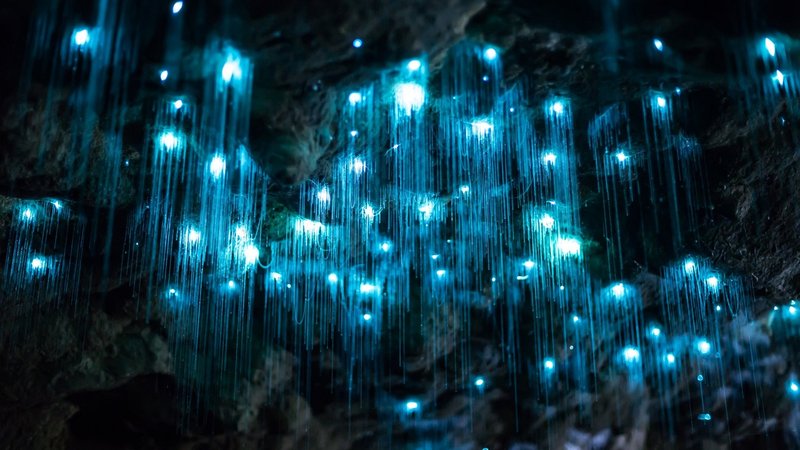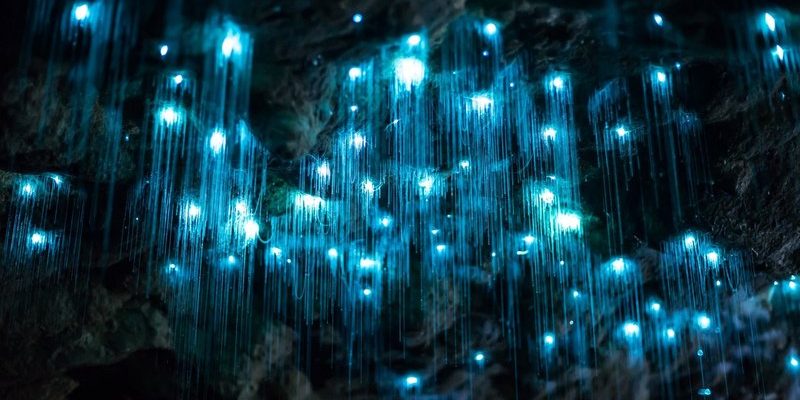
Imagine the life of a glow worm as a balancing act. They thrive in diverse environments, from the moist depths of a cave to the cooler mountain heights. But how do these tiny creatures manage to find their place in such varying conditions? Let me explain how altitude impacts them and what adaptations come into play along the way.
Understanding how glow worms adapt to different altitudes helps us appreciate not just their beauty but also their remarkable resilience. Let’s dive into their world, where light and survival entwine beautifully.
What Are Glow Worms?
Before we dig into their adaptations, let’s take a moment to understand what glow worms actually are. While the term “glow worm” can refer to several species, it’s most commonly associated with the larvae of certain beetles in the family Lampyridae or the fungus gnat larvae from the family Keroplatidae. These tiny critters produce bioluminescent light through a chemical reaction in their bodies, attracting prey and ensuring survival.
Glow worms’ light isn’t just for show; it’s like nature’s version of a neon sign. The light helps to lure unsuspecting insects, which become their food. But, here’s the twist—these worms are masters at adapting their hunting techniques based on where they live. For example, in lowland areas, the environment is rich in the moisture and darkness they thrive in, while in high-altitude habitats, the conditions change dramatically.
How Altitude Affects Their Environment
Altitude brings a myriad of challenges for any creature, and glow worms are no exception. As they climb higher into the mountains, they face cooler temperatures, higher winds, and less humidity. Picture hiking up a steep trail; every step gets a little tougher, right? That’s similar to what these little beings experience.
At higher altitudes, the air pressure drops, and so does the moisture level. This can complicate their existence since glow worms prefer humid environments to thrive. In fact, many species might struggle or even fail to survive if they’re not adapted to these changes. So, how do they manage it?
It’s all about *adaptation*: glow worms have developed ways to handle these tough conditions. For instance, they often build their silk webs in sheltered spots to protect against wind and retain moisture. The cooler temperatures might slow their metabolism, but they also become more efficient in hunting, making every glow count.
Temperature Regulation
Temperature regulation is crucial for glow worms to survive in varying altitudes. As they climb higher, the temperature drops, which can stress many organisms. But for glow worms, they have a few tricks up their sleeves.
When temperatures decrease, glow worms tend to enter a state of torpor, a temporary hibernation-like condition. This allows them to conserve energy until conditions improve. Think of it like when you pull on an extra sweater during a chilly evening campfire—it helps you keep warm and cozy!
In warmer, lower altitudes, their metabolism speeds up, and they become more active at night. Higher temperatures can lead to a more vibrant glow, but it comes with the risk of dehydration. So, these worms find a delicate balance, adjusting their behavior based on the temperature to maximize their chances of survival.
Humidity and Moisture Adaptations
Humidity is a game-changer for glow worms, especially as they navigate through different altitudes. These guys are pretty sensitive to moisture levels in their environment. High humidity helps them thrive by enabling their silk production, which is crucial for trapping prey and creating protective webs.
In lowland regions, where moisture is abundant, glow worms can easily flourish, building impressive silk structures. But at higher altitudes, where the air is thinner and drier, they adopt some fascinating adaptations.
To combat lower humidity, glow worms can adjust their silk production. They might reduce the amount of silk they produce or concentrate on building webs in more sheltered areas, like crevices or under leaves where moisture can linger. It’s like finding an oasis in the desert—these smart adaptations ensure they make the most of what’s available.
Nutrient Availability and Food Sources
Another aspect of altitude that dramatically affects glow worms is the availability of food sources. Their primary diet consists of small flying insects, which may be less abundant in certain high-altitude environments. With fewer insects around, glow worms must rely on their adaptability to manage food scarcity.
In lower altitudes, food is plentiful, and glow worms can glow brightly to attract a wide range of prey. They might even intensify their light in more competitive environments to outshine others. However, at higher elevations, they may need to employ different strategies, such as adjusting the length of their hunting periods or using less light to be more energy-efficient.
Interestingly, some glow worm species have also been observed to shift their foraging patterns based on seasonal changes, which is another clever adaptation. When resource levels drop, they become more selective with their energy use, ensuring they can last through lean times.
Behavioral Adjustments to Higher Elevations
Beyond physical adaptations, glow worms adjust their behavior to cope with life at high altitudes. These changes can include their feeding habits, reproductive strategies, and nesting techniques.
For example, some glow worms may become more nocturnal, making the most of cooler nights to hunt and attract mates. By doing this, they can dodge the harsher daytime conditions that come with higher altitudes. Think of it like going out for ice cream late at night to avoid the sweltering daytime heat!
Moreover, during breeding, they may synchronize their glow to increase chances of finding a mate. This adaptation is vital since populations in high altitudes can be sparse, making every glimmer count when it comes to reproduction.
The Future of Glow Worms in a Changing Climate
As we look to the future, it’s essential to consider how ongoing climate change might impact glow worms. With rising temperatures and shifting weather patterns, the delicate balance that supports their survival at various altitudes could be disrupted.
Glow worms thrive in specific conditions, and even slight changes can affect their population health. Increased drought or extreme temperature fluctuations can lead to habitat loss, making it imperative to study how these glowing wonders adapt over time.
Efforts to conserve their habitat and understand their needs can help us protect these beautiful creatures. After all, their survival isn’t just about their glow; it’s about maintaining the ecosystems they inhabit.
In conclusion, glow worms are a testament to nature’s ability to adapt and thrive in different environments. From adjusting their hunting strategies to managing moisture levels, they show us that even the smallest creatures can overcome big challenges. Next time you spot that magical glow in the dark, remember the incredible journey it took for those little lights to shine brightly in the night.

